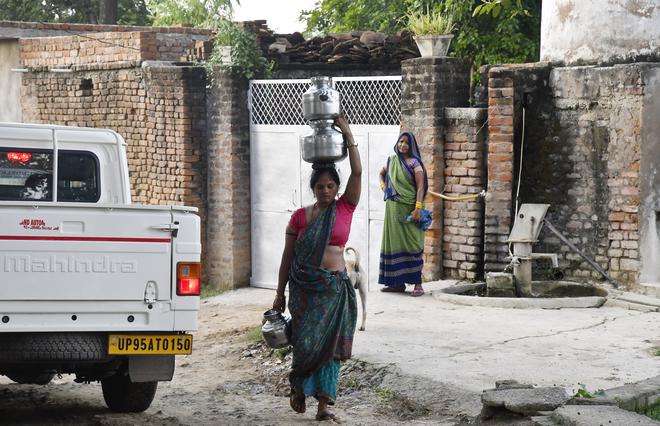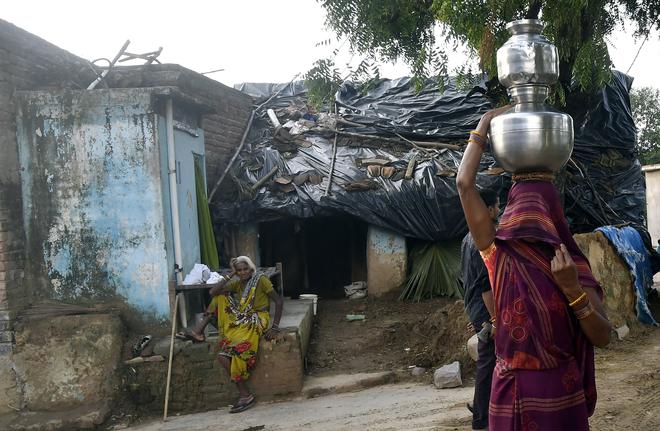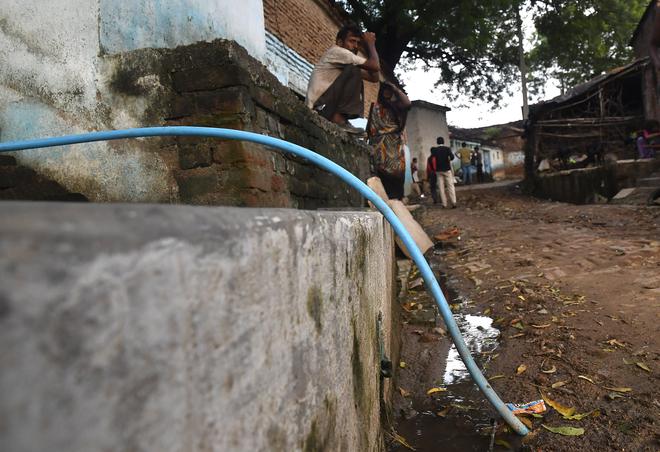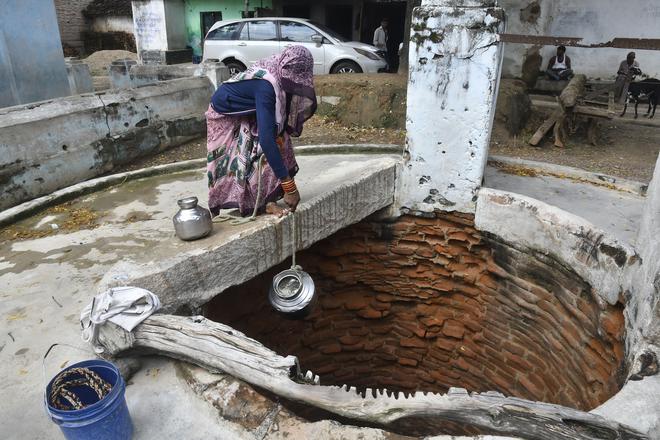On Independence Day, 2019, this water-starved district in south-eastern Uttar Pradesh reported only 1,612 households with tap connections. Four years later, 1,29,209 households – or about 98% of all rural homes in Mahoba district – have water connections, according to the public dashboard of the Jal Jeevan Mission (JJM), the Centre’s ₹3.6 lakh crore scheme that aims to provide piped water to every village home by 2024.
No other district in India has reported such a dramatic increase in tap connections. However, a visit to some of the villages here suggests that a household certified as “connected” in JJM parlance does not always mean one with an actual water supply.
Also read: Har Ghar Jal initiative: liquidating the hand pump
Claim vs reality
Even in villages which have been officially certified as having 100% coverage of functional household tap connections (FHTC), several households do not actually have taps. Some do have taps, but are not getting any water through them; even in the best case scenario, such households get no more than two hours of water.

According to the scheme’s definitions, an FHTC household is one where at least 55 litres of potable water per person a day is made available to every household.
A senior official in the district administration told The Hindu that in 100 out of the 398 villages in the district, eligible household tap connections had been fully connected with running water supply. However the JJM’s official dashboard reports that all 385 villages have a “100% household tap connection.”
These distinctions are significant because all of these households are included in Uttar Pradesh’s official claim of 1.6 crore households which have functional tap connections, up from 5.1 lakh households in 2019, conveying the impression that they all have access to tap water. Uttar Pradesh has reported a dramatic surge of such tap connections in the last two years; they now make up about 6% of the 13 crore rural households across the country connected to tap water.
Still reliant on groundwater
The district consists of four blocks: Charkhari, Jaitpur, Panwari, and Kabrai. Charkhari has 48 villages with 24,037 households, each of which has been marked as having a tap connection. Residents of Asthaun, a village with 420 households, gripe that only half the households have taps and no water actually flows through them. Noting that half the village is in a low-lying area, resident Sunil Tiwari says that without a submersible pump, which “only the rich could afford”, water simply did not make it to most houses. The village is still reliant on groundwater from handpumps for domestic drinking purposes.

Many houses did have a pipe connection drawn out from the main central pipeline that had recently been laid out in the village; however, this was too narrow and inadequate to convey water into houses.
Water supply challenges
In Luhari village, whose 295 houses have all been marked as having ‘tap connections’, village pradhaan (head) Bhan Singh told The Hindu that most of the houses have pipes, while the metal taps are present in a “few houses.” Here too, the challenge is water supply. His own house – an imposing structure – relies on groundwater drawn from a borewell.
In the Kunata village of the adjoining Panwari block as well, all 185 households have been marked as having a household tap connection. However, conversations with villagers – and visits to some of their residences –suggests that many houses do not even have the pipes, let alone the taps, that have been promised as part of the Har Ghar Jal scheme. Many of the access roads into the village have been cleaved to install the central pipeline that is expected to bring in water from the nearest water reservoir, but the pipeline itself is still missing.
Water treatment efforts
Women here continue to walk to the several handpumps or to the village well to draw water. Water-scarce Mahoba has historically relied on lakes and ponds for irrigation, but the region’s rocky sub-surface means that perennial sources of groundwater are few. The Har Ghar Jal mission’s overarching aim is to wean villagers off their dependence on groundwater and handpumps, and instead provide piped water sourced from dams and rivers. Given that such water is often contaminated, the Mahoba administration has commissioned five large water treatment plants that will draw in water from some of the large reservoirs in the district, treat them, and then supply them as piped water to households.

“These treatment plants are in various stages of commissioning and the water is frequently tested for purity,” said Zubair Baig, Additional District Magistrate, Mahoba. “If the water quality doesn’t meet standards, supply is stopped for cleaning.” He said that a major challenge of the mission was commissioning pipes that ran for hundreds of kilometres over undulating terrain, given that a crack or leak can cause disruptions in supply. He added that the State had set itself a deadline of ironing out all the creases and having “full water supply” by 2024; in Mahoba itself, the deadline is November of this year.
‘Taps get stolen’
Shivhar village, in the Charkhari block, has 180 households all marked as FHTC. Residents here say that all houses have a tap connection and on “most days”, water flows through them for an hour or two in the morning. “On average, two hours of water is about 1,000 litres and that’s much more than what the typical household can use every day,” said Bhagwati Sahu, engineer at the Shivhari water treatment plant in the district.

The plant here is responsible for providing water to 63 villages, but, he said, there cannot be a continuous supply all the time, as households do not store water in tanks, as they do in cities. “We have provided taps to many houses but we get complaints that taps are stolen. We provide pipes and insist that villagers make arrangements to take care of them before we go and install proper taps,” he said.
!["[T]he First and Fifth Amendments Require ICE to Provide Information About the Whereabouts of a Detained Person"](https://images.inkl.com/s3/publisher/cover/212/reason-cover.png?w=600)






